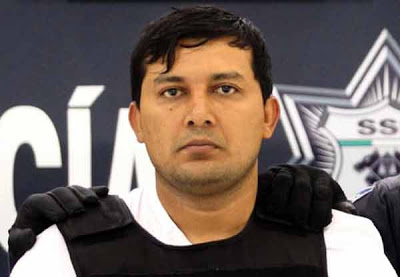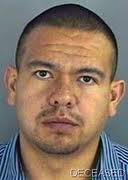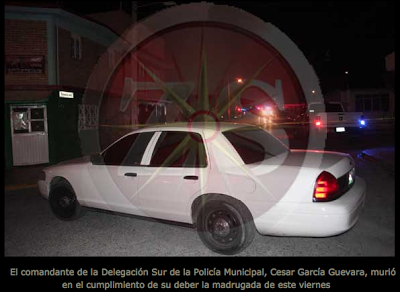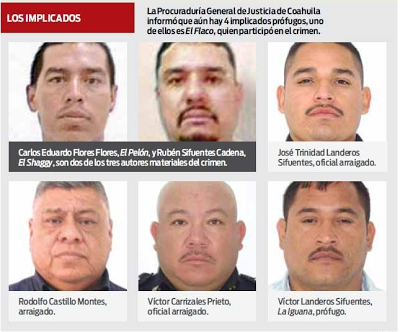El Diario/Proceso
12-29-2012
Anabel Hernandez
Translated by un vato for Borderland Beat
During the six-year Calderon administration, and as a result of his war against drug trafficking, 25,276 persons acquired the classification of "desaparecidos" (disappeared). They are 25,276 human beings who officially are neither alive nor dead. They simply are not there. They are only statistics, but behind each of them there is a woman, a man, or a child with names, last names and families, and of whom so far nothing is known. This weekly journal gained access to the "Integrated Database of Persons not Found" (Base Integrada de Personas no Localizadas) and the report from all the attorneys general in the country, which was presented last July 17 (2012). From an analysis of both documents comes the first official count of the "disappeared" in Mexico, a phenomenon that is part of the inheritance that, like it or not, the government of Enrique Pena Nieto received and must confront.
Distrito Federal (Proceso).-- Disappeared Person No. 2,586: Martha Teresa Chacon Corral. Housewife born in Durango, Durango; 1.70 meters (5'7") tall, medium build, medium dark skin, wavy brown hair, has some facial discoloration. On February 14, 2011, after 5:00 p.m.,she was with her son, Jose Angel Martinez Chacon, in her home, when two men entered all the way into the ironing room, where Martha Teresa was, and took her. She was wearing blue jeans, cap, grey T-shirt with blue sleeves, pink felt boots and a pink sweatshirt. Since then, her whereabouts are not known.
Disappeared Person No. 15,822: Newborn male whose parents did not have time to register. March 33, 2007, in Ciudad Madero, Tamaulipas, disappeared. The report was filed that same day.
Case No. 22,889: Juan Antonio Mota Macias, 28 years old. Commander of a Zacatecas corrections facility (Centro de Readaptacion Social). On March 11, 2010, at 1:30 in the afternoon he was in his home in the town of Trancoso, Zacatecas, with his wife and son, when a group of armed men came into his house and took him. He was wearing underwear only and was barefoot. At this time, his whereabouts are unknown.
Brothers Gerardo and Eduardo Bahena Cabrera are numbers 2,728 and 2,739 on the list. The first was 29 years old and the second, 26. Members of the Armed Navy (Marines), they disappeared on January 1, 2010, in Matamoros, Tamaulipas, and nothing is known about them since.
Numbers in the shadow
All are part of the list of persons who disappeared in Mexico during Felipe Calderon's war against drug trafficking, and they are in a report drafted by the Attorney General's Office (PGR) and the justice departments of all the states and the Distrito Federal. They are simply some of the thousands of women, men, children and babies that during six years appear to have vanished on a highway, a military road block, in their homes, on the way to grocery store or simply out walking.
While the government of Enrique Pena Nieto and local authorities have remained silent regarding the list of persons who disappeared in Mexico from December, 2006, to July, 2012, Proceso obtained access to the "Integrated Database of Persons not Found" and to the most recent report created by the PGR and the attorneys general of 32 states and the Federal District (Distrito Federal) that was presented July 17 (2012) at the Interior Ministry (Secretaria de Gobernacion).
The database and the report jointly reflect the horror of the "desaparecidos" in Mexico. The integrated database, updated to February, 2012, contains 20,851 cases, but the report presented on July 17 states that the number of disappeared persons reached 25,276. On Tuesday, December 18, Proceso had access to the documents and analyzed the statistics and facts. This is the first information about the Calderon's government human disaster.
According to the investigation and the official documents that were accessed, the "Integrated Database of Persons not Found" and the attorneys general report presented on July 17, 2012, at the Interior Ministry was prepared and organized by personnel at the PGR's Planning , Analysis and Information Center against Crime (Cenapi; Centro de Planeacion, Analisis e Informacion para el Combate a la Delincuencia). Cenapi gathered and organized the information provided by the state attorneys general.
Each disappeared person was assigned a number, the date, state, township or police station and town where the disappearance took place were noted, and the date of each particular report. The name of the disappeared person was noted, along with the age, gender, occupation, nationality and aliases, if this was known. The report also details whether there are photographs of the person.
Also, there was a section where their physical and health characteristics were described, as well as the registration of any vehicle the person may have been traveling on and a brief description of the incident. Finally, it was thought advisable to also include data about the relative who reported the disappearance.
On reviewing the data, one can see that not all the states include the same degree of detail in the information about the victims. Some states provided very vague information.
The numbers in the database only reflect those disappeared persons for whom there was a report made or police complaint filed. Disappearances not reported (to the authorities) are not included, as in the case, for example, of undocumented immigrants that cross Mexican territory on their way to the United States.
Through the National Commission for Human Rights (Comision Nacional de los Derechos Humanos) it is known that there are hundreds or thousands more cases.
In addition to the reports provided by local authorities, Cenapi added information from the Center for Investigation and National Security (CISEN; Centro de Investigacion y Seguridad Nacional), according to the documents that were reviewed for this article.
The integrated database contains just one case from 2005, which was not reported until 2006, without specifying the date; there's also a report from August, 2006), but the rest involves persons who disappeared between December 1, 2006, and February, 2012. The figure of 20,851 (disappeared) persons was obtained from this document.
According to official documents that Proceso has, on May 24 and 25, during the XXVII Ordinary Session of the Plenary Meeting of the National Conference on Procurement of Justice (XXVII Sesion Ordinaria de la Asamblea Plenaria de la Conferencia Nacional de Procuracion de Justicia) in Monterrey, the PGR and the state prosecutors agreed to complement and finalize the reports in the database no later than June 5, 2012, and to develop a permanent method for amplifying, updating and validating the information.
In that session, it was also agreed that, in order to comply with the requirements in the decree by which the Law for the National Registry of Facts on Lost or Disappeared Persons (Ley del Registro Nacional de Datos de Personas Extraviadas o Desaparecidas) was promulgated, information referring to the "general facts about persons not located" should be forwarded to the National System of Public Security.
According to the document, of which Proceso has a copy, "towards that end, on June 13, the PGR/Cenapi and the National Information Center of the National System of Public Security began to work on a project proposal, taking into consideration the structure of the database required and the legal document upon which to base the corresponding exchange of information, in order to comply with the referenced law."
As far as can be determined, the intent was to make the numbers public. But it didn't happen that way.
The numbers increased noticeably in the reports provided by the state attorneys general and Cenapi personnel began to clean up the list to determine how many of the disappeared persons had already been found, dead or alive, so they could have a figure that was closer to reality.
The numbers were overwhelming. No government was safe, except the Nayarit government, which reported zero disappearances. All of them, including the federal government, maintained silence on the numbers.
On July 17, 2012, in the third national meeting of the Executive Secretaries of the state public security systems or councils at the Interior Ministry, a report was presented on the progress on the Collaboration Agreement for the Unification, Integration and Exchange of Information on the Matter of Persons not Found (Convenio de Colaboracion para la Unificacion, Integracion e Intercambio de Informacion en Materia de Personas no Localizadas).
The gross number of disappeared persons was 29,386, but it was cleaned up: 3,895 persons were found alive and 215 were found dead. The final number was 25,276. This report is not as detailed as the database, but is instead a summary, updated up to the day of the meeting, of the number of persons whose disappearance was confirmed.
Cenapi personnel had in their possession the database and the report was released by then-Attorney General Marisela Morales days before the Calderon administration ended. The former public servants have expressed fear that the information on disappeared persons was erased from the PGR archives, but they point out the National Public Security System and the state governments also have (the information), but have chosen to remain silent.
Presumably, this is the reason that they leaked part of the information to the Washington Post and another part to the Investigation and Training Center Civic Proposal (Centro de Investigacion y Capacitacion Propuesta Civica). The complete information was provided to this reporter on Tuesday, December 18.
2011 and the DF, the worst
From December, 2006, to July, 2012, the year with the greatest number of disappeared persons was 2011. According to the report from the state attorneys general, the number was 8,977; that was the year that had the most murders in the Calderon war against drug trafficking. In February of 2012, the PGR officially admitted to a figure of 12,903 deaths in executions or confrontations between organized crime groups.
From confrontations between criminal organizations, 48 persons a day were murdered and 24 (per day) disappeared, on average.
The year with the second highest number of disappeared persons was 2010, with 7,246. It was also the second most violent year in the six year administration, with almost 11,500 murders by organized crime, according to tallies from several sources. The states in which there appeared to be less explicit violence were the ones with the most disappearances.
According to the report presented on July 17, the entity with the most disappeared persons was the Federal District (Distrito Federal), with 9,268 cases, 36% of the 25,276 disappeared persons in the entire country.
(Anabel Hernandez/Proceso)
Share it:
 RSS Feed
RSS Feed
 Thursday, January 3, 2013 |
Thursday, January 3, 2013 | 































